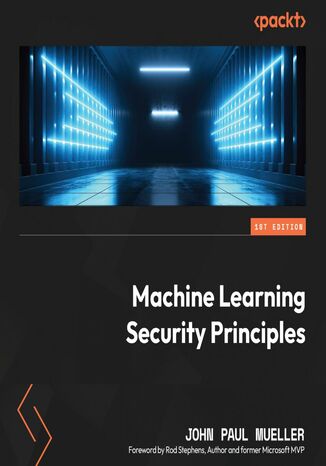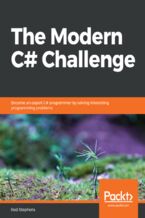Machine Learning Security Principles. Keep data, networks, users, and applications safe from prying eyes John Paul Mueller, Rod Stephens


- Autorzy:
- John Paul Mueller, Rod Stephens
- Wydawnictwo:
- Packt Publishing
- Wydawnictwo:
- Packt Publishing
- Ocena:
- Stron:
- 450
- Dostępne formaty:
-
PDFePub

- Audiobook w mp3
Opis
książki
:
Machine Learning Security Principles. Keep data, networks, users, and applications safe from prying eyes
As you progress to the second part, you’ll learn more about the environments where ML is commonly used and dive into the security threats that plague them using code, graphics, and real-world references.
The next part of the book will guide you through the process of detecting hacker behaviors in the modern computing environment, where fraud takes many forms in ML, from gaining sales through fake reviews to destroying an adversary’s reputation. Once you’ve understood hacker goals and detection techniques, you’ll learn about the ramifications of deep fakes, followed by mitigation strategies.
This book also takes you through best practices for embracing ethical data sourcing, which reduces the security risk associated with data. You’ll see how the simple act of removing personally identifiable information (PII) from a dataset lowers the risk of social engineering attacks.
By the end of this machine learning book, you'll have an increased awareness of the various attacks and the techniques to secure your ML systems effectively.

Wybrane bestsellery
John Paul Mueller, Rod Stephens - pozostałe książki
Packt Publishing - inne książki
Dzięki opcji "Druk na żądanie" do sprzedaży wracają tytuły Grupy Helion, które cieszyły sie dużym zainteresowaniem, a których nakład został wyprzedany.
Dla naszych Czytelników wydrukowaliśmy dodatkową pulę egzemplarzy w technice druku cyfrowego.
Co powinieneś wiedzieć o usłudze "Druk na żądanie":
- usługa obejmuje tylko widoczną poniżej listę tytułów, którą na bieżąco aktualizujemy;
- cena książki może być wyższa od początkowej ceny detalicznej, co jest spowodowane kosztami druku cyfrowego (wyższymi niż koszty tradycyjnego druku offsetowego). Obowiązująca cena jest zawsze podawana na stronie WWW książki;
- zawartość książki wraz z dodatkami (płyta CD, DVD) odpowiada jej pierwotnemu wydaniu i jest w pełni komplementarna;
- usługa nie obejmuje książek w kolorze.
Masz pytanie o konkretny tytuł? Napisz do nas: sklep@ebookpoint.pl
Książka drukowana







































Oceny i opinie klientów: Machine Learning Security Principles. Keep data, networks, users, and applications safe from prying eyes John Paul Mueller, Rod Stephens
(0)